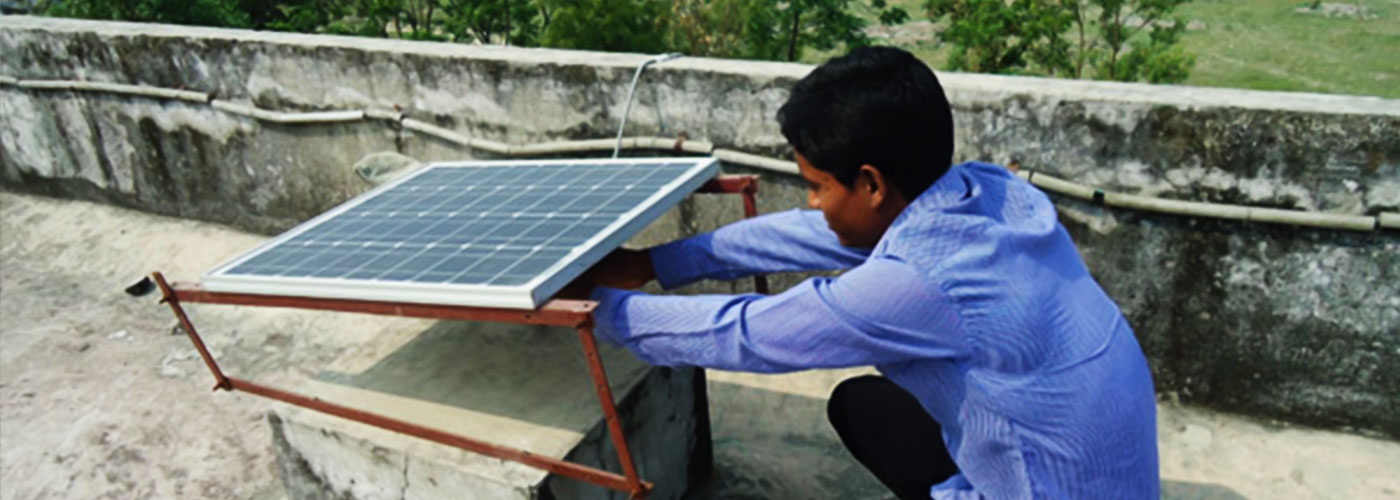In 2012, India set the record for the largest energy blackout in history affecting more than 700 million people and exposing the weakness of the national grid. There are a handful of technologies that can deliver reliable power to a country like India suffering from endemic power cuts—rooftop-solar power is one of them.
A lack of financing stifles many entrepreneurs’ efforts to provide local people with reliable solar power Tweet This Quote
While the potential for rooftop solar is vast, a lack of financing stifles many entrepreneurs’ efforts to provide local people reliable solar power. Local banks are uninterested in funding this seemingly “new” technology, even though it’s been around since the 70’s. International lenders like the Overseas Private Investment Corporation (OPIC) and the International Finance Corporation (IFC) could jumpstart the market by providing the initial funds, but they are stuck in the past paradigm of big centralized power plants. To catalyze the rooftop-solar industry in India and beyond, international lenders need to develop a new framework to invest in small-scale solar projects.
International lenders need to develop a new framework to invest in small-scale solar projects Tweet This Quote
There is great need for reliable power in India. In some states, power cuts occur everyday and can last for more than 16 hours. In all cities, blackouts are likely to occur and are most dangerous on hot summer days when everyone is using their air conditioners. Conveniently, solar power is the perfect solution to this problem because its peak production occurs in the middle of the day providing electricity to people when they need to cool down. As solar power scales up, it can eventually eliminate that mid-day peak as has already happened in countries with a lot of solar power, like Germany.
In nearly half of Indian states, rooftop solar is cheaper than the electricity commercial buildings can buy from the grid. And in nearly all states, it is cheaper than electricity from diesel-backup generators. Instead of spending billions of dollars on diesel and unreliable grid electricity, that investment can be used to deploy rooftop solar.
There is great need for reliable power in India. Tweet This Quote
This is already occurring globally. In 2014, almost 140 billion was invested in the solar industry. Of this massive investment, $70 billion was invested in smaller-scale, distributed solar projects like rooftop systems. Scale increasingly means that dozens of rooftop installations can be aggregated into billions of dollars of deployment. Small is big.
Deploying billions of dollars of rooftop solar requires investment, and local investors and banks in India are not getting the job done. Some international organizations are helping to fill the gap though. Obama announced a $4 billion government-backed investment in India this past month. Half of that sum will go towards renewable energy through the U.S. Trade and Development Agency, and another $1 billion from the OPIC will be lent to small and medium-size businesses (SMBs) in rural areas. These sums are a great start, but they won’t reach local solar entrepreneurs unless the big organizations change their mindset.
International lenders are still stuck in the past when electricity meant big, centralized power plants with extensive grids. This model has failed to bring reliable electricity to millions of Indians as well as the 1.3 billion people globally without access to electricity. International lenders have been unsuccessful in financing rooftop solar because it is too small; they need to figure out how to make their big grants reach small solar systems.
The rooftop solar industry in India and other emerging markets is prime and ready to boom. Tweet This Quote
The investments big institutions—the IFC, OPIC, and US Export Import Bank—make into local entrepreneurs deploying rooftop solar will demonstrate to local financiers the attractive return sitting under their noses. As domestic lenders pile into the rooftop solar market, the international funding organizations can step aside and use their funds to catalyze the industry in another country. In turn, this will unleash a multi-billion dollar investment opportunity, like what is happening in the US and Europe.
The rooftop solar industry in India and other emerging markets is prime and ready to boom. All that is need is a few savvy financiers to light the spark that starts the solar revolution.



